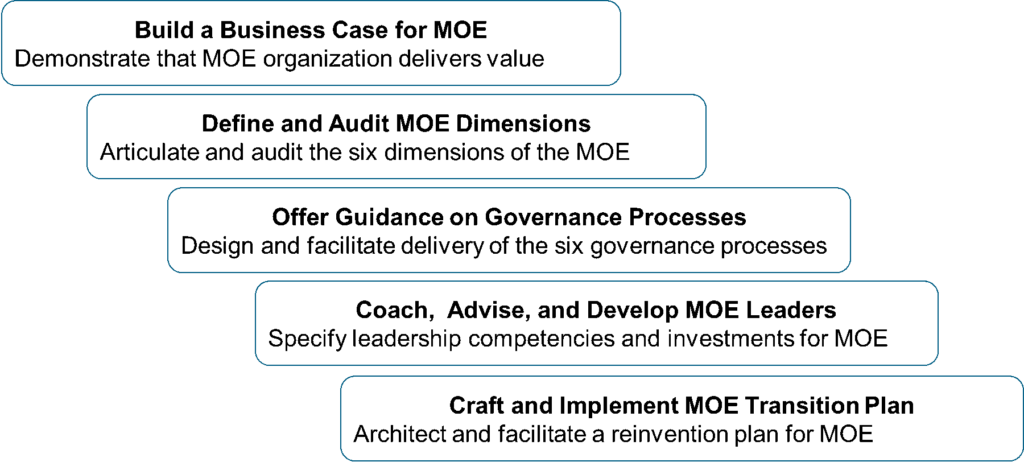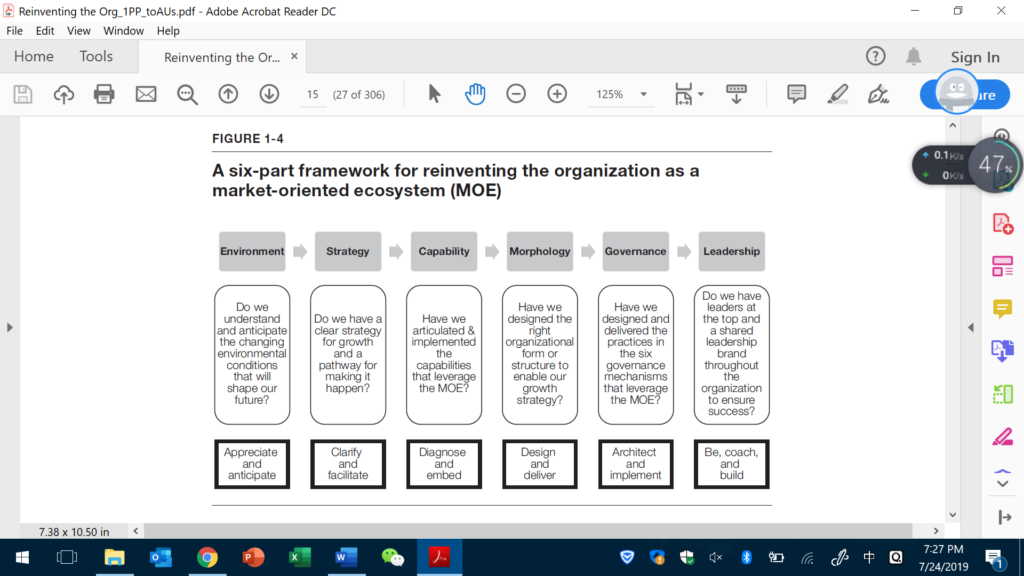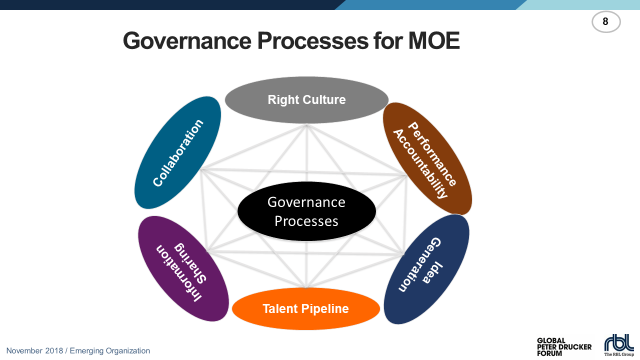How HR professionals can reinvent their organisations
- 5 Min Read
This week, Dave Ulrich and Arthur Yeung publish their brand new book, ‘Reinventing the Organization: How companies can deliver radically greater value in fast-changing markets’. Here, the authors take you through organisational reinvention, and how HR can make it happen.
- Author: Dave Ulrich and Arthur Yeung
- Date published: Sep 13, 2019
- Categories

Our research has consistently shown that “organization” (culture, capability, workplace, processes) adds more value than “individual” (talent, competence, workforce, people) in bringing about business results. This work has allowed us to declare that the most valuable thing HR can give to an employee is an organization that wins in the marketplace and that our focus on the war for talent should pivot to victory through organization (as defined above). We call this HR from the outside in.
To help HR professionals deliver value through organization, we have focused our work on helping them build the “right” culture, which is the identity of the firm in the mind of the key customers made real to employees. As such, the “right” culture turns an external brand into internal agendas for all HR practices.
Organization Reinvention: Market-Oriented Ecosystem
In more recent work, we have discovered that “organization” requires not just cultural transformation but a much broader application. In today’s world of incredible change, volatility, disruption, and turbulence, leaders need to reinvent their organizations to become ever-more responsive to dynamic market opportunities. In our study of today’s leading firms (e.g., Amazon, Facebook, and Google, in the U.S.; Alibaba, DiDi, Huawei, and Tencent in China; and Supercell in Europe) and by synthesizing others’ work in this area (with concepts like holacracy, boundary-less, agile, ambidextrous, network, and exponential), we have defined a new organizational form called the market-oriented ecosystem (MOE) that addresses this broader reinvention need.
Instead of being organized by divisions where a chain of command allocates resources, the MOE organization has a platform of resources (money, people, technology, data) that is dedicated to market opportunities. Each market opportunity is assigned an independent team (or cell) where employees anticipate customer requirements and move quickly to respond to them. Historically, this organizational logic might be seen as holding companies—with a hub and spokes. But the MOE connects the independent teams and platforms into an ecosystem to share vital information, resources, and expertise to fuel customer obsession, innovation, and agility. The MOE is a novel way of designing organizations to be both small (agility through independent teams) and large (economic scale through platforms), innovative (new market insights discovered in market-oriented teams) and learning (sharing information across teams and platforms).
HR’s 5 Roles in Market Oriented Ecosystem
We have shown that HR delivers value to internal (employee, business strategy) and external (customers, investors, communities) through talent, leadership, and organization. The MOE redefines organization and contributing HR professionals play five major roles in helping reinvent an organization to be an MOE (see figure 1).

Build a Business Case for MOE
HR can help business leaders see that the quality of their organization makes a difference in employee, strategic, customer, investor, and community results. HR can track the impact of reinventing the organization for each of these stakeholders and make a business case for adopting the MOE logic. HR professionals are and will continue to be employee advocates AND organization innovators.
Define and Audit MOE Dimensions
HR can help define what it means to be an MOE and audit the company’s current adherence to MOE principles. We have identified six dimensions of the MOE (figure 2) along which HR can facilitate an assessment among senior leaders and a cross section of other employees. These audits allow for measurable progress to making the MOE happen.

Offer Guidance on Governance Processes
HR can identify and improve the firm’s choices on six areas of governance identified in figure 3. Note that these six areas include culture, but the right culture alone is not enough to institutionalize MOE principles. For each of these six governance areas, HR can provide specific insights, choices, and processes to ensure that the transition to an MOE occurs. HR is both the architect who designs and the contractor who builds the new MOE organization.

Coach, Advise, and Develop MOE Leaders
HR can help leaders recognize the importance of paying attention to their behaviors to ensure their behaviors are consistent with the MOE logic. Doing so will help both leader and employee behaviors reflect MOE principles because employees will observe and often do what their leaders do.
HR can assess individual leaders and collective leadership against identified MOE behaviors. Further, HR can design and deliver development experiences for leaders that may include personal coaching, formal training, and learning experiences to help them acquire MOE leadership skills. Finally, HR can measure the impact of leaders acquiring MOE leadership skills and measure the extent to which those skills create an MOE that delivers intended results.
Craft and Implement MOE Transition Plan
As agents of change, HR professionals can guide the MOE transition process by bringing in insights about change from the Organization Development field that make a successful transition happen. Those principles include starting small, assigning a transition team, managing a dual organization logic, drafting a roadmap of the change journey, and learning forward.
Conclusion: Now is the time for organizational reinvention
We continue to find in our research and experiences that HR adds value not only through individuals (talent) but through organization (culture). But to fully reinvent an organization to become the emerging market-oriented ecosystem (MOE), HR should go beyond culture to a complete overhaul of the structure of the organization. This MOE organization responds quickly to market opportunities, liberates employees to give their best, and gives investors confidence in future growth. Reinvention offers both great opportunities and challenges for HR professionals who want to have greater impact.








